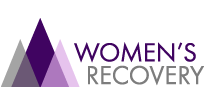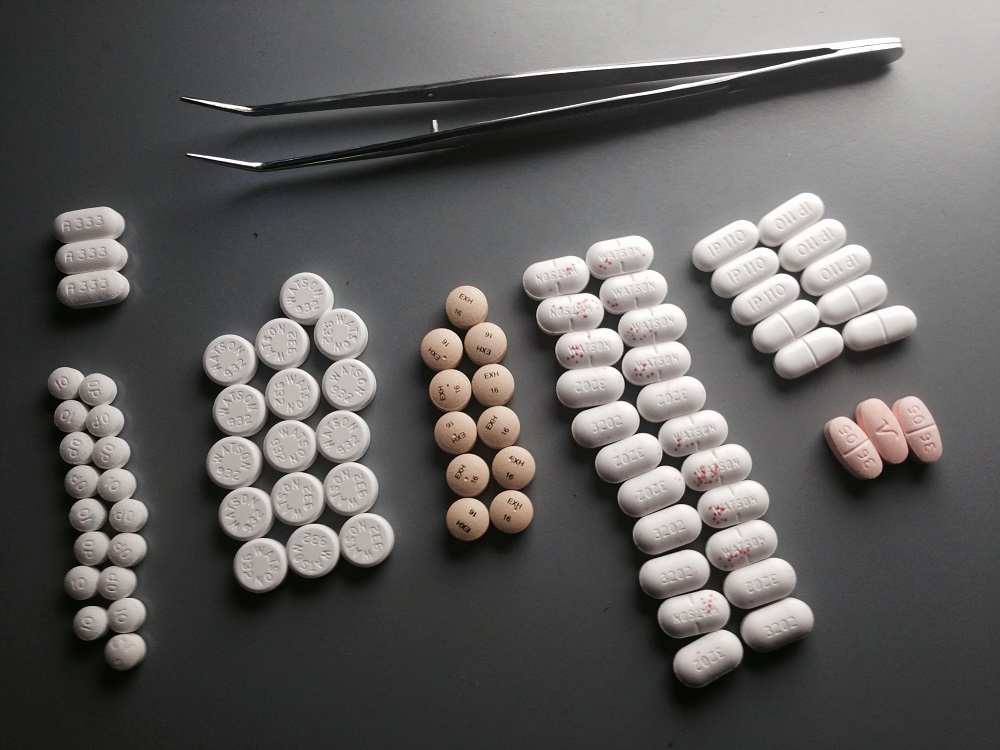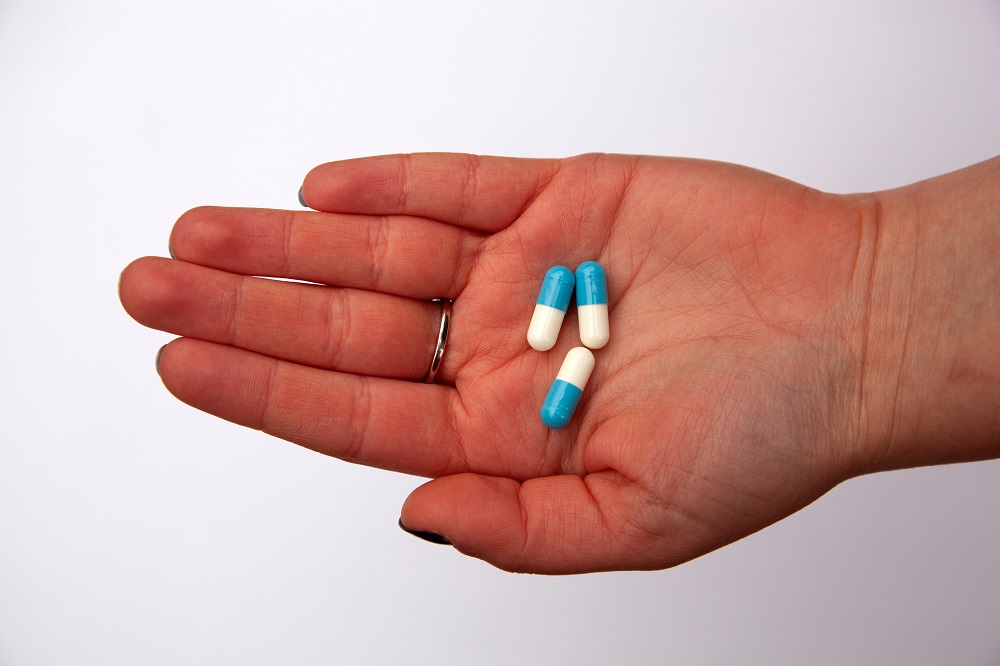
~ LaTisha Bader, Ph.D., LP, LAC, CMPC, Chief Clinical Officer at Women’s Recovery
Overcoming opioid addiction and painkiller abuse may seem impossible, but there are many resources available for you. Due to the opioid crisis in the US, the government stepped in. They implemented new laws and regulations to ensure that doctors don’t overprescribe opioid painkillers any longer. They have also made sure that your insurance company covers some form of drug rehab so people can get the help they need.
If you suspect you have an addiction to opioid prescription medication, there are many options available to you. Many Americans have fallen victim to opioid addiction. You’re not alone if you’re suffering from an opioid medication addiction. As of 2017, it’s estimated that there were 1.7 million Americans who experienced a substance use disorder related to prescription pain medication. Within these statistics, there were 652,000 people who were addicted to heroin. Experts say that up to 6% of those who misuse prescription opioids turn to heroin later on. Furthermore, 80% of those who use heroin had misused prescription opioids beforehand.
“IOPs are an important part of the continuum of care for alcohol and drug use disorders. They are as effective as inpatient treatment.” ~ Dennis McCarty, Ph.D.
What Is Needed for Long-Term Recovery From Opioid Addiction?
It’s not an easy road to recover from opioid addiction, but many have done so successfully. This is how they did it.
1. Get Honest
The hardest part is acknowledging that you have a problem. Many people feel such guilt attached to having an addiction, so they quietly suffer. Addiction is a disease; it is not a character flaw. Big Pharma misrepresented their products to doctors and even said that their opioid medications weren’t addictive. Doctors overprescribed, and there was very little supervision to patients who ended up on these meds for far too long. What we know now is that opioid prescription painkillers will certainly lead to a physical addiction when taken for more than a few weeks. If you’re addicted to opioids, it’s likely you were misled. There is no shame in it, so get honest and get help.
2. Treatment
Many women addicted to opioids will try to quit on their own. This usually ends up in many failed attempts that make you feel as though there is no hope. Addiction treatment can increase your chances of a successful recovery by up to 60%. It should begin with detox and then onto rehab. There are a variety of rehab programs available, such as inpatient rehab, outpatient rehab, and the Intensive Outpatient Program (IOP). If a person goes through rehab, which is strongly recommended, they will see a psychologist every day. This allows the patient to learn how to cope with life issues and mental problems more effectively.
While opioid addiction is not always due to a person numbing their emotions, there are many who have mental health problems, putting them at greater risk of becoming addicted to prescription medications. For those with this problem, psychotherapy is highly recommended. To learn what your treatment options are, please contact Women’s Recovery today at 833.754.0554.
Support from family members and close friends is an important part of your healing. When you have people you love backing you up, it can make all the difference. Going through counseling is extremely valuable as well. Group meetings also give you the support you need as they are going through the same battle and understand your struggles.
Depending on how intense your addiction was, sobriety could feel like a major lifestyle change. When you abstain from opioids, it’s not going to be easy in the beginning. At first, you may experience withdrawal symptoms that make life uncomfortable. Triggers and cravings can come up that make you question your efforts. This is a huge part of why professional rehab is so helpful in the beginning stages. You may have questions such as how long are the opioid withdrawal symptoms going to last?
Sobriety begins to become a positive part of your life. Less and less, you’ll experience hard moments, and they will be replaced with happy moments. There will be struggles, but in the back of your mind, you’ll know that you are caring about your own well-being. You’ll regain power and control over your own life, leaving opioid addiction behind you with conviction.
5. Harm Reduction Practices
Harm reduction represents many different health and social services practices that have to do with the abuse of opioids and all other substances. Usually, the requirement for getting into any programs like this will include you abstaining from opioid use beforehand. So it’s recommended that you go through rehab before reaching out for harm reduction support. Harm reduction includes things like drug consumption rooms, programs that offer clean syringes, sober living housing, help with employment opportunities, drug checking, preventing overdose, and psychosocial. These are cost-effective methods that have been proven to work.
6. Getting Clean and Handling Withdrawal
There are dangers and discomforts that come from opioid detox. It’s often highly recommended that an addict goes through professional detox, but there are other options as well. There are certain substances that require detox for your own safety. While opioids are not one of them, there are health risks involved, so it’s not recommended you do at-home detox. The discomforts that you experience once the opioids start to leave your system can be eased either holistically or with medication to assist.
When you are at home doing a detox from opiates, your chances of relapse are high, plus it can be painful. This is where the major risk of an opioid overdose can occur. The body has lost some of its tolerance to opioids if you’ve gone a few days without it. You’ll likely take the same amount if you relapse, which could cause you to overdose.
You don’t have to go it alone, but you may not need medical detox. However, to overcome a physical addiction, professional and communal support may be vital. Many women aren’t sure they need supervised detox, and each case is unique. Some women are able to start their recovery journey (and sobering up from opiates) through outpatient treatment and close guidance and support. If this is something that you think might be a fit for you, check out our Women’s Recovery’s Outpatient Program or reach out today to speak to a counselor about options.
7. Non-Opioid Pain Management
What if you’re still in pain? Maybe addiction rehab and your aftercare plan are giving you a new lease on life, but the pain you had is still there. The reason a patient is prescribed opioids is to manage pain. There are opioids that are for chronic pain, relieving pain that would otherwise make life challenging to cope with. With the help of better sleep and strategies to help moderate pain, patients may be able to live without opioid prescription medications. Trump has supported research on other pain medications that can replace opioids that are less addictive. A patient can work with a physician to create an effective pain management plan.
Not all painkillers available on the market are addictive. Non-opioid medications that reduce pain include ibuprofen, acetaminophen, aspirin, and steroids. Holistic measures such as physical therapy and acupuncture can be helpful. Mindfulness and behavior modification not only helps with cravings but also ease the pain you may experience due to stress in your life. There is also the option of nerve block injections or surgery.
8. Medication-Assisted Treatment (MAT)
When necessary, there is medication available to alleviate the discomfort of withdrawal symptoms. This will usually begin in the detox process. Medications will either be taken long-term, or gradually, the patient will taper off the drugs. MAT also covers short-term treatment for someone who has overdosed.
In some cases, methadone is used, but it is highly addictive and needs to be monitored closely. Suboxone (buprenorphine and naloxone) is an option, but there are risks of addiction. Vivitrol (naltrexone) is an FDA-approved medication for opioid withdrawal that is non-addictive. It basically blocks your ability to get high from any opioid, acting as an opioid receptor blocker.
Opioid addiction hit hard and affected many Americans. For those affected, know that there is no shame in it. You were lied to and believed that you could stop taking opioids at any time. The good news is there is an abundance of support to get you past opioid addiction. There are rehab programs near you that are valuable in your journey to sobriety.
You can verify your insurance with rehab facilities before seeking treatment. They give you all the tools to manage addiction recovery in the real world. Once you’re done rehab, there are many programs in your area that connect you with support. This could be anything from NA meetings to government-run programs. There is family support to bring you closer to your loved ones again. Getting past opioid addiction will be challenging, but the rewards waiting on the other side are worth the effort.
Maybe you’ve tried other methods to get sober, but they didn’t work. Until recently, there has never been a treatment like the Vivitrol injection. Vivitrol has shown to be the safest drug used to help alcoholics and opioid addicts.
Learn more today!
The Opioid Crisis
The opioid crisis hit the US hard, with rural towns and cities in every state being affected. Opioid painkillers were developed as part of a pain management method. Companies like Purdue Pharmaceuticals heavily marketed products like OxyContin, which give morphine-like effects. When patients would go to the doctor for pain, they were given opioids for relief. This was especially the case in small towns where resources like physiotherapy weren’t available.
Purdue was sued for billions of dollars later for their immoral practices, like offering doctors monetary items in exchange for prescribing their drugs. They also lied to the medical community about the addictive nature of OxyContin. Other companies that manufactured opioids followed suit.
Starting in 1999, the epidemic grew steadily for a decade. Doctors gave out pain killer medications, often without following up. These pain killers were meant to be part of an overall pain management plan, which should have included other forms of rehabilitation. This often didn’t happen. Further down the rabbit hole, there was mismanagement in patient files. It was easy for people to go “doctor shopping” or go to another pharmacist to get more. There wasn’t a system to alert doctors and pharmacists of the person’s history.
The opioid epidemic has had various phases. It started with prescription opioids, followed by heroin (which is cheaper and easier to get), and now fentanyl. These are the opioids that are in existence within the current crisis. Someone addicted to opioids can get their fix by interchanging the three drugs. It just depends on what a person can get. This is why opioid addiction treatment has become so widely available. To counteract the crisis.
Statistics on Opioid Addiction
- Up to 29% of patients that are prescribed opioids will misuse them.
- As many as 12% of patients who take opioids will develop an opioid addiction.
- Patients that misuse opioids are at risk of transitioning to heroin. Statistics say up to 6% of those with an opioid addiction will end up doing heroin.
- The US Center for Health Statistics found that from 2010-2016, heroin deaths increased nearly five times in the US.
- In 2016 and 2017, more than 130 people died every day from opioid-related deaths.
- Prescription opioid volumes were at the highest in 2011. There were 240 billion milligrams of morphine prescribed. As of 2018, this had fallen by 29.2 milligrams.
- From 2007-2016, Vicodin (hydrocodone) was the most prescribed opioid. In 2016, there were 6.2 billion hydrocodone pills distributed in the US. Percocet came second, with 5 billion tablets being distributed.
- There were an estimated 10.3 million people aged 12 or older in the US that misused opioids in 2018. There were 9.9 million prescription pain medication abusers and 808,000 people who abused heroin.
Working hard on your recovery doesn’t always mean you have to completely put your life on hold. We support women who need to continue to work and take care of their loved ones while they heal.
What Comes Now That So Many are Addicted to Opiates?
The government has implemented many different means to fight against the opioid crisis. In 2013, right in the middle of the crisis, there was an estimated $78.5 billion spent on opioid addiction and overdose. In 2016, the 21st Century Cures Act was passed, and $1 billion was allocated to fighting against the opioid crisis. The money is giving funds to all the states for expanded addiction treatment and prevention programs. In 2017, $485 million in grants were distributed to every state and territory. President Donald Trump signed the opioid legislation into law. This includes finding new drugs to replace opioids that aren’t as addictive.
There is also more access to opioid addiction treatment for those with Medicaid. What does this mean for you? It means that you have more help than ever to get opioid addiction treatment. There is government assistance available to you if you need it. Also, there are regulations in place that ensure your insurance covers some form of addiction treatment.
Deaths vs. Overdoses
Throughout the decade of the opioid crisis, overdose and death increased. When fentanyl was brought into the equation, overdose deaths rose exponentially. Naloxone is a drug that reverses the effects of opioids. It has saved countless lives and adjusted the scales on how many opioid overdoses occurred. There were 17,029 drug overdose deaths that involved prescription painkillers in 2017. In total, there have been over 700,000 drug overdose deaths, with a high percentage of these being opioid-related. People who are dependent on opioids are most at risk of overdose. An opioid overdose that doesn’t result in death is more common than a fatal overdose. About 45% of people abusing opioids will experience a non-fatal overdose.
The Most Dangerous Opioids On the Market
All opioids can cause addiction and lead to overdose. They affect the body in the same way, so it’s a matter of strength. Fentanyl is the strongest form of opioid with a high probability of overdose, often leading to death. As of 2016, synthetic opioids (mainly fentanyl) were the most common drugs that involved overdose deaths in the US. Synthetic opioids like fentanyl were involved in almost half of the opioid deaths.
Potency and the amount that was distributed have a lot to do with how dangerous each drug is. The generic names for the strongest prescription opioids are hydromorphone and oxymorphone. They are stronger than morphine and have a high potential for abuse. Vicodin and Percocet are the two top distributed opiate pain killers that have hydromorphone as an active ingredient. It usually starts with a legitimate prescription. Taking these drugs for a long time leads to tolerance.
You are likely to start misusing the drug at this point because you need more to get relief from pain. This abuse can quickly turn into opiate addiction. OxyContin is another high-risk opioid for addiction and overdose. It has been used as a “date rape” drug, which makes it dangerous for someone who unknowingly takes it. It is highly addictive and should not be used for a long period of time.
Differences Between Pain Pill Abuse, Dependence, and Addiction
Opioids are effective at relieving pain. This is especially true for short-term pain like an injury or pain after surgery. They aren’t effective for chronic pain because of the tolerance that is most likely to occur. Tolerance means that you need more of the drug to get relief from pain. This can quickly lead to opioid painkiller abuse, which for some can lead to heroin addiction. When a person becomes tolerant, they will probably notice withdrawal symptoms if they stop using the medication. These are signs of opioid physical dependence. These symptoms can include agitation and flu-like symptoms. If you notice this happening, speak to your physician right away to minimize the risk of developing opioid addiction.
11 Signs you’re Abusing Your Prescription Painkillers
There is a difference between dependency and opioid use disorder. Not quite sure if you’re addicted to opioid painkillers? There are symptoms that can indicate a problem. When you take opioid medications to avoid withdrawal symptoms or to get a high from them, this is a tell-tale sign of opioid addiction. These are some of the common signs of opioid addiction:
- You take more than is prescribed.
- You take other opioid medications because your prescription has run out.
- The medication influences your ability to function.
- You take the prescription pills for reasons other than what they were prescribed for.
- Opioid usage takes priority over work, school, or your home life.
- You run out of medication before your next refill is available.
- You experience a positive emotional response when you take the drugs.
- You’ve lied or stolen to obtain opioids.
- You go to the ER in a non-emergency situation in hopes of obtaining opioids.
- You’ve “doctor shopped” with the hopes that someone will give you opioids.
- You continue to take the medication despite negative consequences.
Get Treatment at Women’s Recovery
Denver Women’s Recovery and all content (graphics, text, and other materials) are only to be used as information. It should not replace medical advice from your physician. It should not be considered a substitute for medical advice, a diagnosis, or treatment.
It’s important to seek out the advice of a qualified health provider if you have questions about a medical condition. Don’t ignore medical advice you’ve received or off getting help with something due to the information you read on our website. In a medical emergency, call 911 right away. At Denver Women’s Recovery, we are not recommending any particular tests, physicians, products, or procedures. Relying on the information we have published is at your own risk. For a formal consultation, please contact Women’s Recovery today at 833.754.0554 today.










